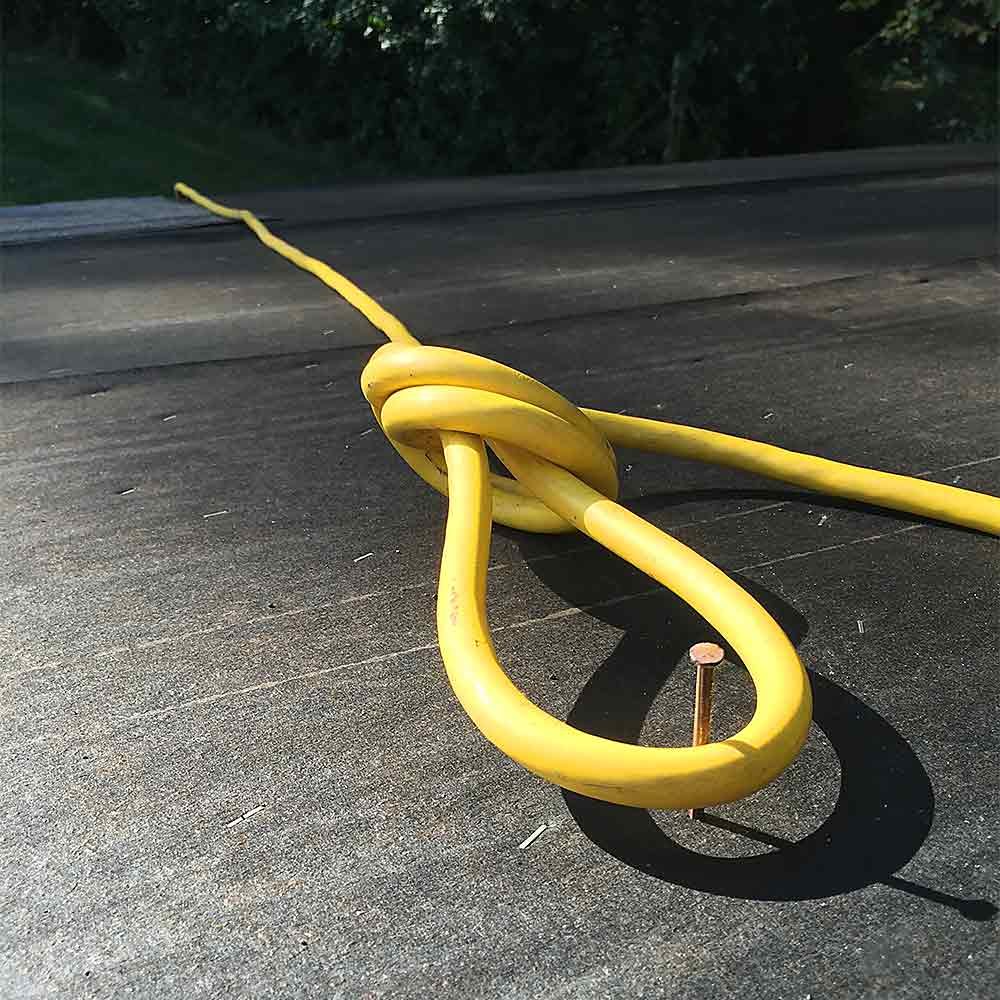
Hang Your Cords High
Whenever you’re up in the air on scaffolding, a roof, or even a ladder on a job that requires extension cords or air hoses, make a loop in the cord by tying a simple overhand knot. Use that loop to support the weight of the heavy part of the cord that dangles down to the ground. You can hang it over a nail, on a scaffolding peg, or anything else that it can hook onto. That way you won’t have to deal with hauling around several pounds worth of cord or hose around your precarious position, and if you drop your circular saw or nailer it won’t go crashing down to the ground.
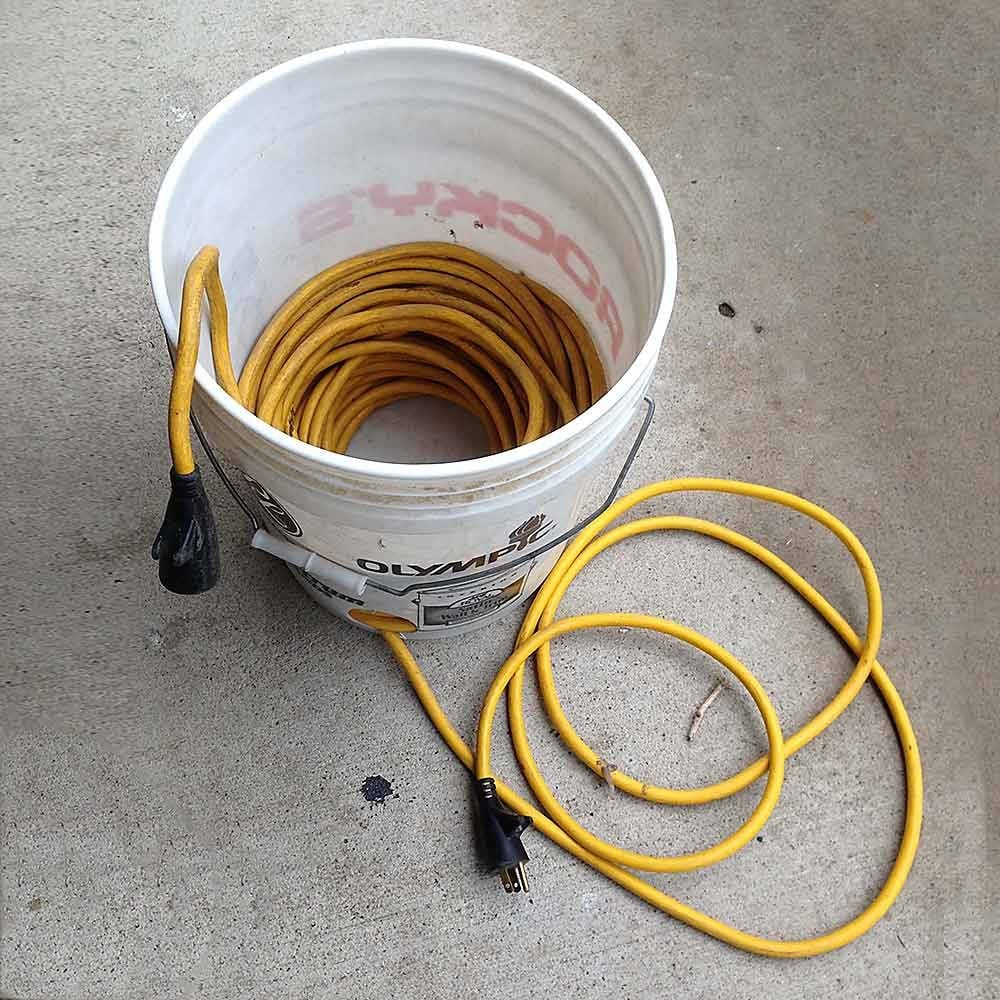
Put the Cord In a Bucket
If you need electricity and the nearest outlet is only visible with binoculars it’s time to reach for your extension cord bucket. What’s an extension cord bucket? It’s simply a 5-gallon bucket with a 2-in. hole cut in the side near the bottom and a long, heavy-duty extension cord loosely coiled inside with the male end sticking out of the hole a couple of feet, just enough to reach an outlet. After plugging the male end of the cord into a GFCI-protected receptacle, grab the female end and start walking. No kinks and no tangles. Works great! Unravel the entire cord if you’re running high amperage tools for a long period of time. If you don’t, the cord could heat up, which poses a potential fire hazard.
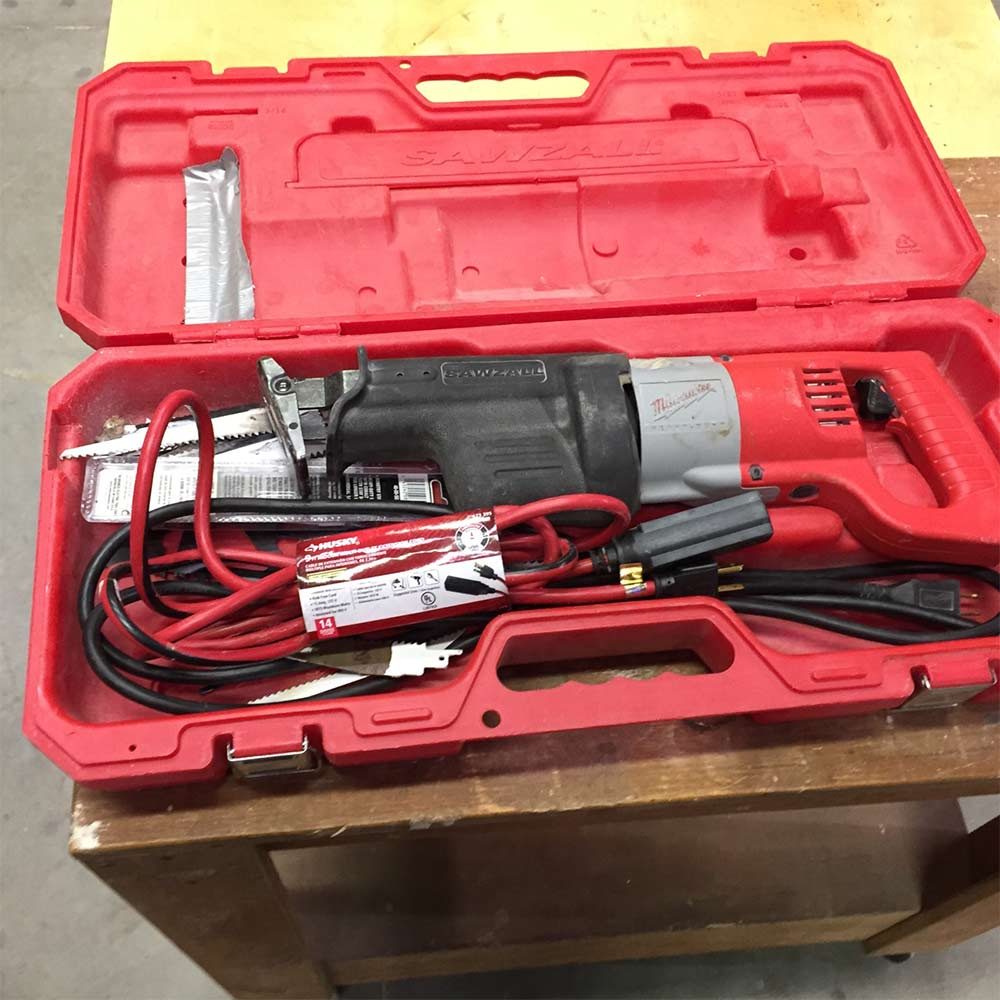
Keep Short Cords with Tools
Keep short extension cords in the boxes of many of your most-used tools, whatever they might be. They might not reach the nearest outlet every time, but they’ll be a convenience often enough to more than justify taking up extra space in the box. Make sure to buy a 14-gauge cord, and look for cords that have a couple of extra spots to plug-in.
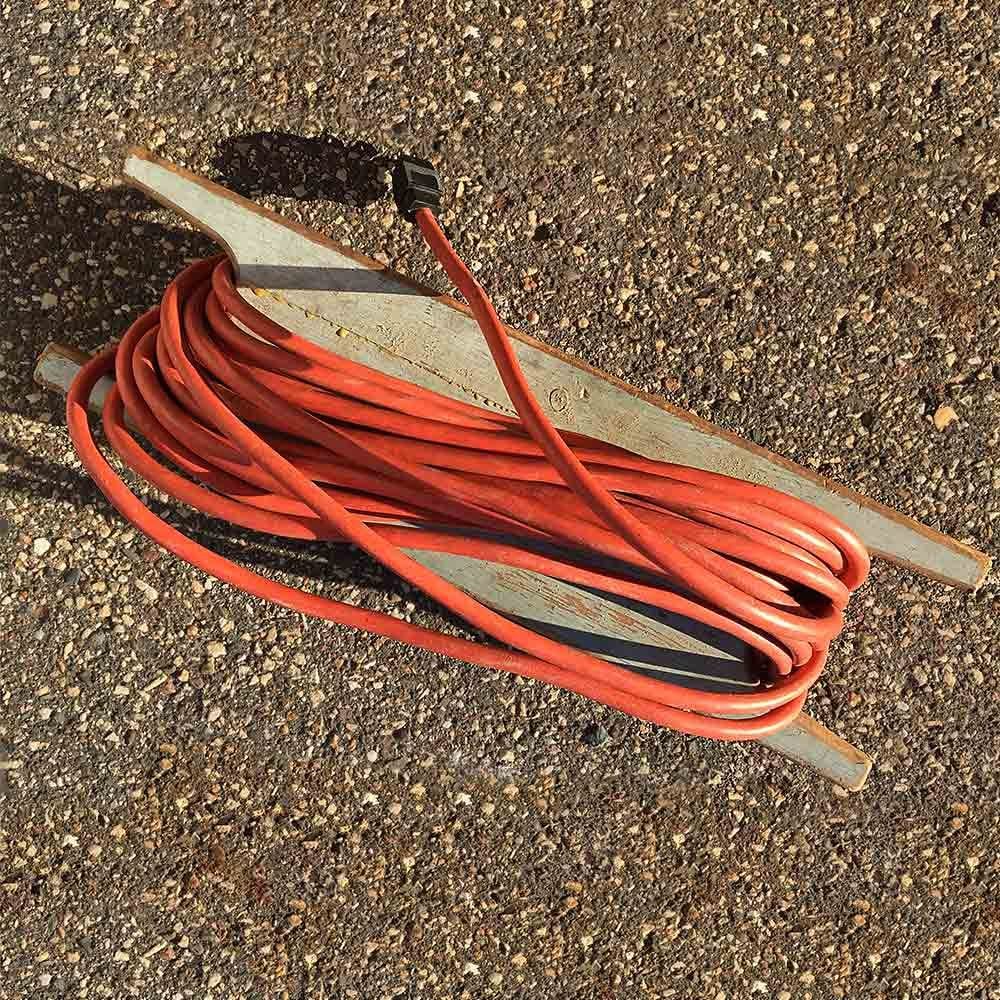
Scrap-Wood Extension Cord Reel
For small to medium-size extension cords, make reels out of scrap lumber or plywood. All it takes to make one of these reels is a couple of scoop cuts on either side of your wood. You could even round the edges with a router, although that’s not necessary if you don’t have one handy.
There are a few things to like about these reels. You only have to unwind the amount of cord you need, so it’s easier to avoid a rat’s nest of unused cords. They’re great for storage, stowing away nicely in a bucket or on a shelf, and they’re easy enough for even the new guy on the job to figure out. If you make one for a long cord, it’s smart to lengthen the reel rather than make enormous scoop cuts at the end. And like all reels, you want to be careful of heat build-up when running a high load continuously.
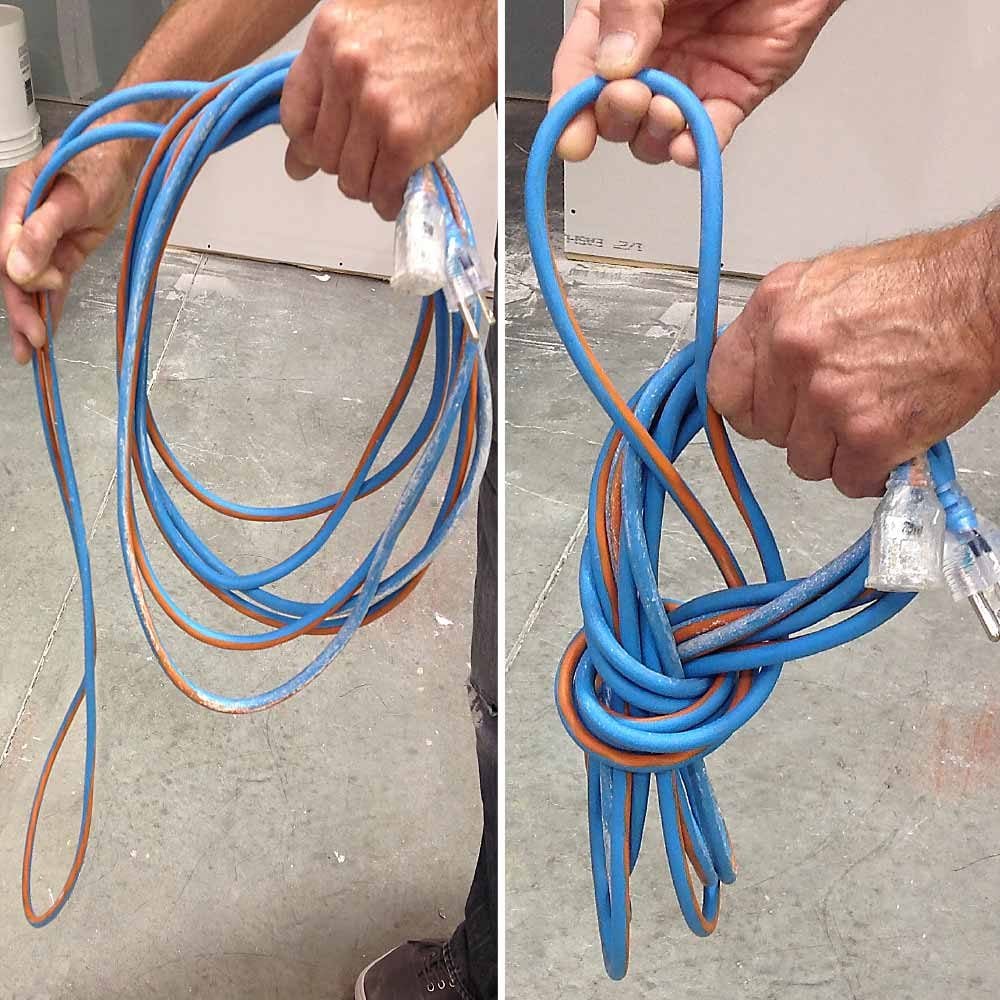
Speedy Cord Wrap
Here’s how to quickly and efficiently wrap up your extension cord.
- Grab both ends and start wrapping the cord into loops about the size of a beach ball.
- When you get near the end, wrap the remaining loop around the middle of the coiled cord and pass it through to make a small loop.
A lot of pros prefer this method because it’s super fast and you can easily hang several cords from one hook. Try it the next time you’re in a hurry to pack up and get home before your dinner gets cold.

Protect Your Cords and Yourself
Steel tracks are sharp. Accidentally stepping on an extension cord that’s draped over a sharp track is a perfect way to cut clean through your cord and electrify the entire wall. To avoid a shock, take a scrap chunk of your track, flip it upside down, and lay it down on any area of the wall where extension cords pass through.

Run Cords Alongside the Building
If you always make sure to tuck your extension cords next to a building or a wall they won’t get tripped on, stomped into the mud or trapped under the wheels of someone’s truck. They’ll last longer too, if they’re not always being walked on, rolled over with wheelbarrows, or crushed by 10-ton telehandlers.